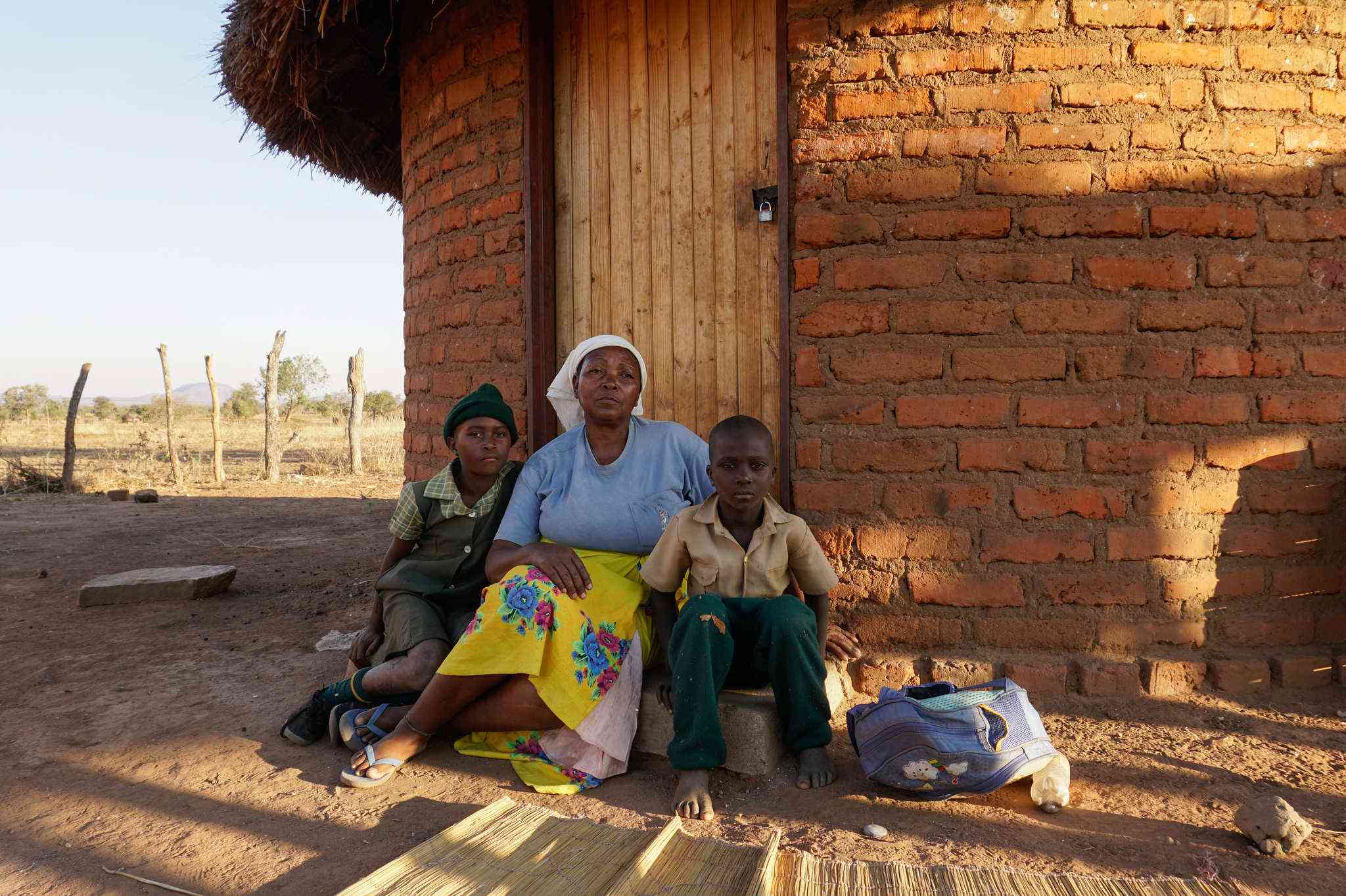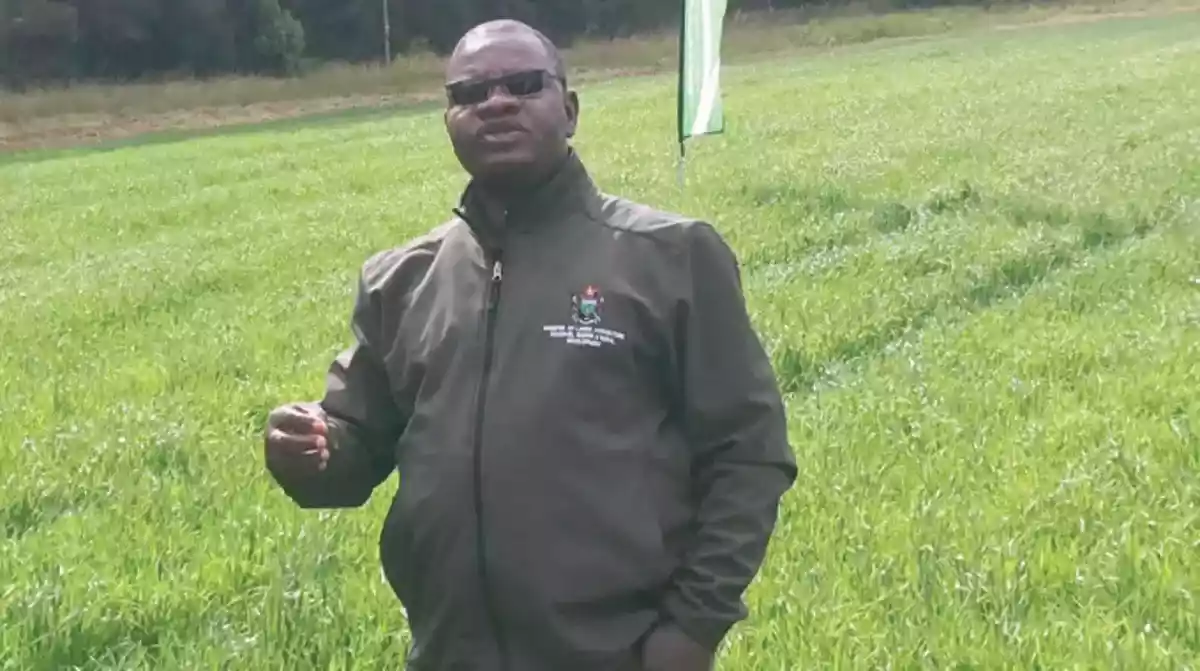
THORNY trees hard enough to withstand dry conditions line the road to Chingwizi, an arid area in southeast Zimbabwe.
Mary Shambira watches the setting sun from her homestead, wondering what she will cook for dinner. “We receive little rain and to add to that, the land we have is too small for anyone to have a meaningful harvest,” she says, rising to start a fire to cook for herself and two grandchildren.
The small pots on the fire tell of the food rations she has to make. Three meals a day are a luxury Shambira can no longer afford. Six of her grandchildren used to live with her, but after seeing the difficulties she was having, Shambira’s brother took most of them to live with him.
“I cook once a day because of the scarcity of food. In the morning, we cook porridge and then a proper meal in the evening,” she says. Sometimes when she has ingredients for samp, a traditional dish of cowpeas and maize, she cooks that in the morning and the sadza, a maize meal staple, in the evening.
Shambira is among more than 3 000 families which were displaced in 2014 after Tugwi-Mukosi Dam flooded due to excessive rains. Tugwi-Mukosi is Zimbabwe’s second-largest inland artificial dam with a holding capacity of 1,8 billion cubic metres of water.
Like many others, Shambira stayed in a transit camp for about four months before being allocated one hectare of land (just shy of 2,5 acres) where she now lives in Chingwizi, about 170km from the dam and 500km southeast of the capital, Harare, in Masvingo province. The relocation hasn’t been without challenge over the years.
The farmer is one of the thousands of Zimbabweans who remain food insecure despite the government’s reassurance that the country is grain self-sufficient.
About 2,7 million Zimbabweans, 26% of the total population, will be food insecure and require food assistance between January and March this year, according to the 2023 Rural Livelihood Assessment report by the Zimbabwe Vulnerability Assessment Committee, a government-led team that co-ordinates national food and nutrition security issues in the country.
- Mavhunga puts DeMbare into Chibuku quarterfinals
- Bulls to charge into Zimbabwe gold stocks
- Ndiraya concerned as goals dry up
- Letters: How solar power is transforming African farms
Keep Reading
The Food and Agriculture Organisation (FAO) of the United Nations had a higher estimate in its October 2023 brief, saying close to 3,5 million Zimbabweans will be food insecure until March. One of the factors cited is reduced agricultural output in the southern and western provinces.
Food insecurity, according to FAO, refers to when a person does not have regular access to “enough safe and nutritious food for normal growth and development and an active and healthy life”.
There are different levels of severity, including uncertainty of ability to attain food, compromising food quality and variety, reducing food quantity, skipping entire meals or going for days without meals.
According to a Agriculture ministry April 2023 report, Mwenezi, the district where Chingwizi lies, produced the least grain sufficient for up to three months after harvest.
Famine Early Warning System Network, an organisation that provides early analysis on acute food insecurity around the world, also notes that some parts of south, east and west Zimbabwe are food insecure despite good rainfall in most parts of the country during the 2022-23 farming season that ended in September. The situation is more dire for communities in Chingwizi, which rely on food aid for a majority of the year because of poor rainfall.
Prince Kuipa, an agricultural economist who is the operations director at the Zimbabwe Farmers Union, says the challenge in Chingwizi is that it is in a region with minimal and erratic rainfall.
Food insecurity in Zimbabwe
Like Shambira, Samuel Mudzungudzi, a village head, says since he relocated from Tugwi-Mukosi, he has never had a harvest good enough to meet his family’s needs. “Even when we receive good rains, the land that I have is too small to have a meaningful harvest that can last for a year,” he says.
Maize is the staple food in the country and the most grown and consumed compared to small grains. In all of Zimbabwe’s provinces, maize yields are lowest in Masvingo, where Chingwizi is located, at 0,54 metric tonnes per hectare (about 0,24 tonne per acre). This is lower than 1,83 tonnes per hectare (0,82 tonne per acre) in Mashonaland East and an average yield of 1,17 tonnes per hectare (0,52 tonne per acre) throughout the country.
According to estimates in the Agriculture ministry report, however, Zimbabwe produced nearly 2,3 million metric tonnes (2,5 million tonnes) of maize in the last growing season, a 58% increase from the previous year. This would be enough maize to meet the country’s own demand and have a bit left over to export.
But a more recent estimate from the United States Department of Agriculture (USDA) paints a bleaker picture. USDA estimates from June 2023 show that Zimbabwe may have produced just 1,5 million metric tonnes (1,6 million tonnes) of maize, according to the agency’s office in Pretoria, South Africa.
Life after the dam disaster
Shambira remembers her life before relocating to Chingwizi.
“I had land which was more than five hectares and I used to grow cotton, maize, sorghum and groundnuts. I used to have enough for my family and could sell some of the produce for money,” Shambira says.
Though where she lived before the disaster is also a semi-arid area that receives minimal rainfall and is sometimes prone to drought, rainfall patterns there are better than those in her current home of Chingwizi. Shambira also lived next to the Mukosi River, whose water she could use on her farm.
Shambira says when they had good rains, she would harvest more than one metric tonne (1,1 tonnes) of sorghum in addition to a variety of other crops.
This past season in Chingwizi, she harvested only two 50kg bags of sorghum. This is less than a tenth of the sorghum she used to get when she lived next to the dam.
Shambira trades some of the sorghum for vegetables. “To get a bundle of leafy vegetables, I have to trade 2kg of sorghum,” she says.
Last year, Mudzungudzi and his family harvested 200kg of sorghum that lasted two months.
Feleni Chauke, chief of Mwenezi district in Masvingo province, agrees that food insecurity is rife in Chingwizi. He says even when there is good rainfall, the community relies on food handouts because they do not have enough land for farming.
The food aid is provided through the government’s social welfare department. Each family member is entitled to about 10kg of grain per month. But food aid that was to be received between August and October 2023 did not come until December, sources say. Prior to that, food aid was last received in April.
What is the government doing?
Mudzungudzi says before they were moved, government representatives at the time made promises. “They said they were removing us from the dam basin, and water will benefit us through irrigation programmes. But almost 10 years on, nothing has been done,” Mudzungudzi says.
Chauke says they have been waiting for the irrigation programme to start for a long time.
“We have had meetings with government for that irrigation plan to take place. A few of the people who represented the community [in 2022] visited a similar community in Plumtree that was displaced by floods, where the irrigation model had been implemented by ARDA [Agricultural and Rural Development Authority]. It is almost coming to take off very soon,” Chauke says.
He hopes the programme will make the community self-reliant, “rather than depending on handouts every year”.
Isaac Mutambara, the district development co-ordinator for Mwenezi, says the government will provide water and arable land for the community in Chingwizi.
“An extra six hectares will be provided for irrigation purposes for each family,” he says. Mutambara says a lot of groundwork is already underway, such as infrastructure design, and he is optimistic the plan will soon be implemented. “All the logistics have been done and very soon, they will have access to water and be self-sufficient.”
Resilience of the community
Clarietar Makaure, Mudzungudzi’s wife, says to survive in the drylands, people have to be innovative.
“I tried to grow vegetables, but the plants died because the water is not conducive for watering plants. It’s salty,” she says.
So the mother of four walks for hours to an area with better conditions where they have put up gardens.
“I walk for about two and half hours to Runde River, where I grow leafy vegetables, carrots and onions. I go once or twice a week to water and weed the garden. It’s not for the weak and fainthearted,” she says, smiling.
Shambira, who suffers from leg pain, and other villagers who cannot walk long distances, rely on people like Makaure to buy vegetables. They trade grains for vegetables. She feels their life would be better if they had enough land and water.
Makaure also dedicates some of her time in this dry and hot area to making reed mats that she exchanges for grain or other groceries.
“When you have a family to feed, you must find ways ... to ensure the family survives because what we harvest is not enough. I always ask God for strength each day on what I can do to survive,” she says.
— Global Press Journal










